Pluto's Heart: A Cosmic Valentine in Photos
Pluto's Cold, Lonely Heart
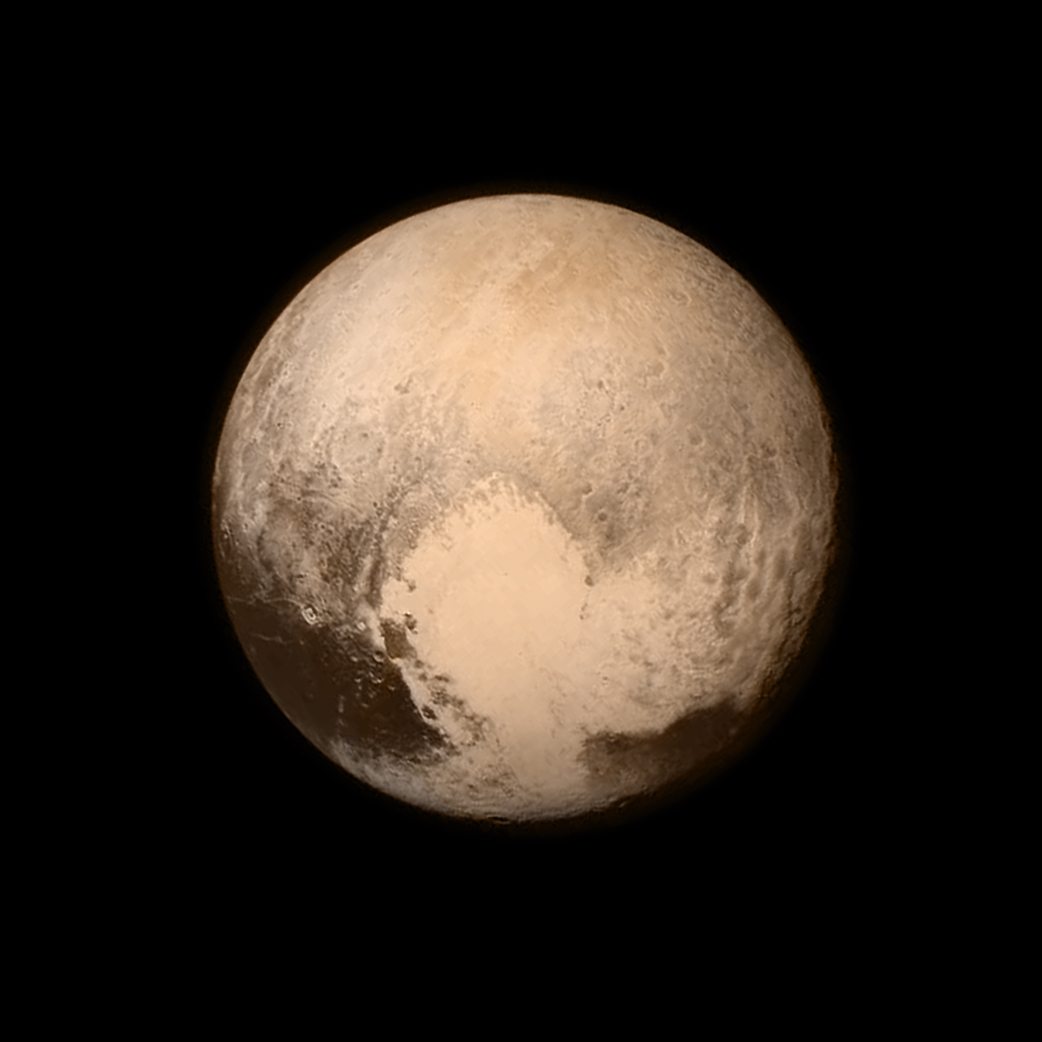
The dwarf planet Pluto was imaged up-close for the first time by the New Horizons probe in July 2015. The heart-shaped region was unofficially named Tombaugh Regio. The left "lobe" of Pluto's heart-shaped feature is a 600-mile-wide (1,000 kilometers) ice plain that
Sputnik Planitia

This snapshot captured by NASA's New Horizons spacecraft shows the western region of the heart-shaped area informally known as Tombaugh Regio, which has been found to be rich in nitrogen, carbon monoxide and methane ices. The image combines blue, red and infrared images taken by the Ralph/Multispectral Visual Imaging Camera (MVIC). Read the full story.
False-color Image of Pluto
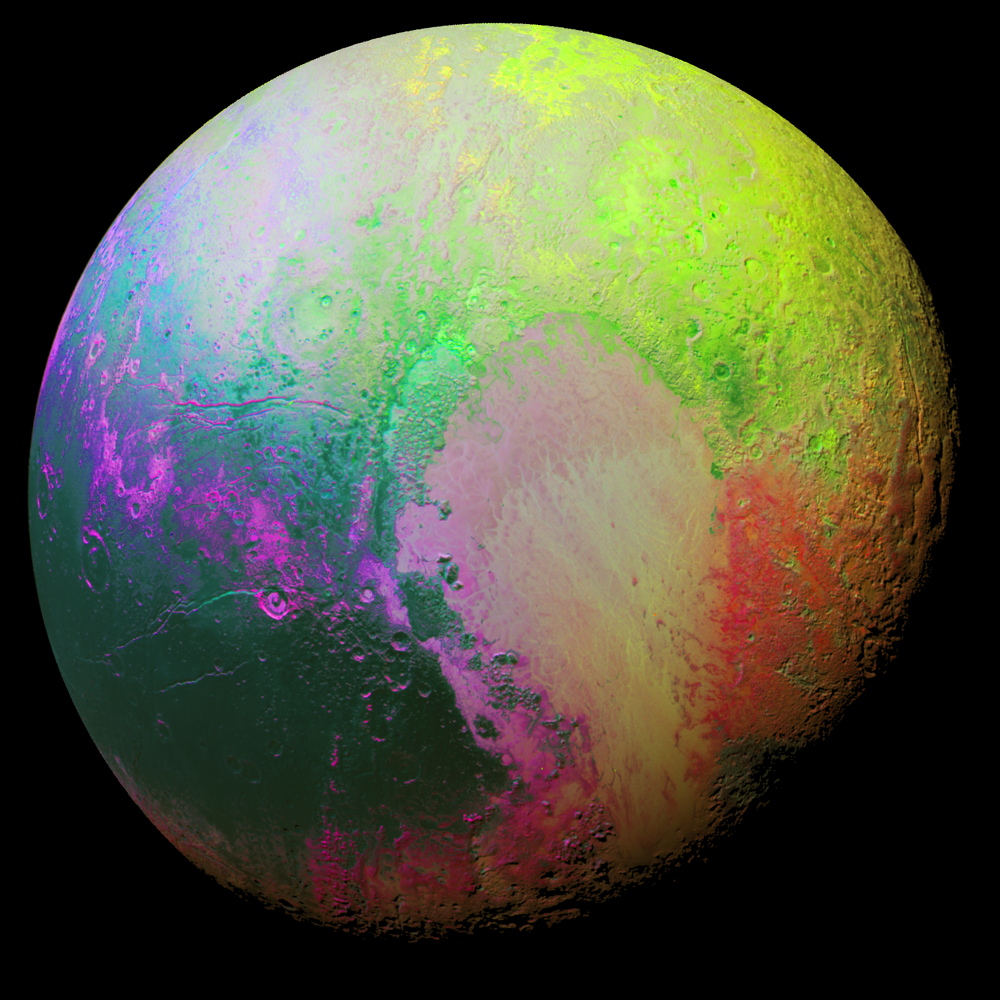
A false-color image of Pluto paints the dwarf planet in an unusual light, highlighting the slight color differences between its different regions. Read the full story.
'Pluto Time' Mosaic
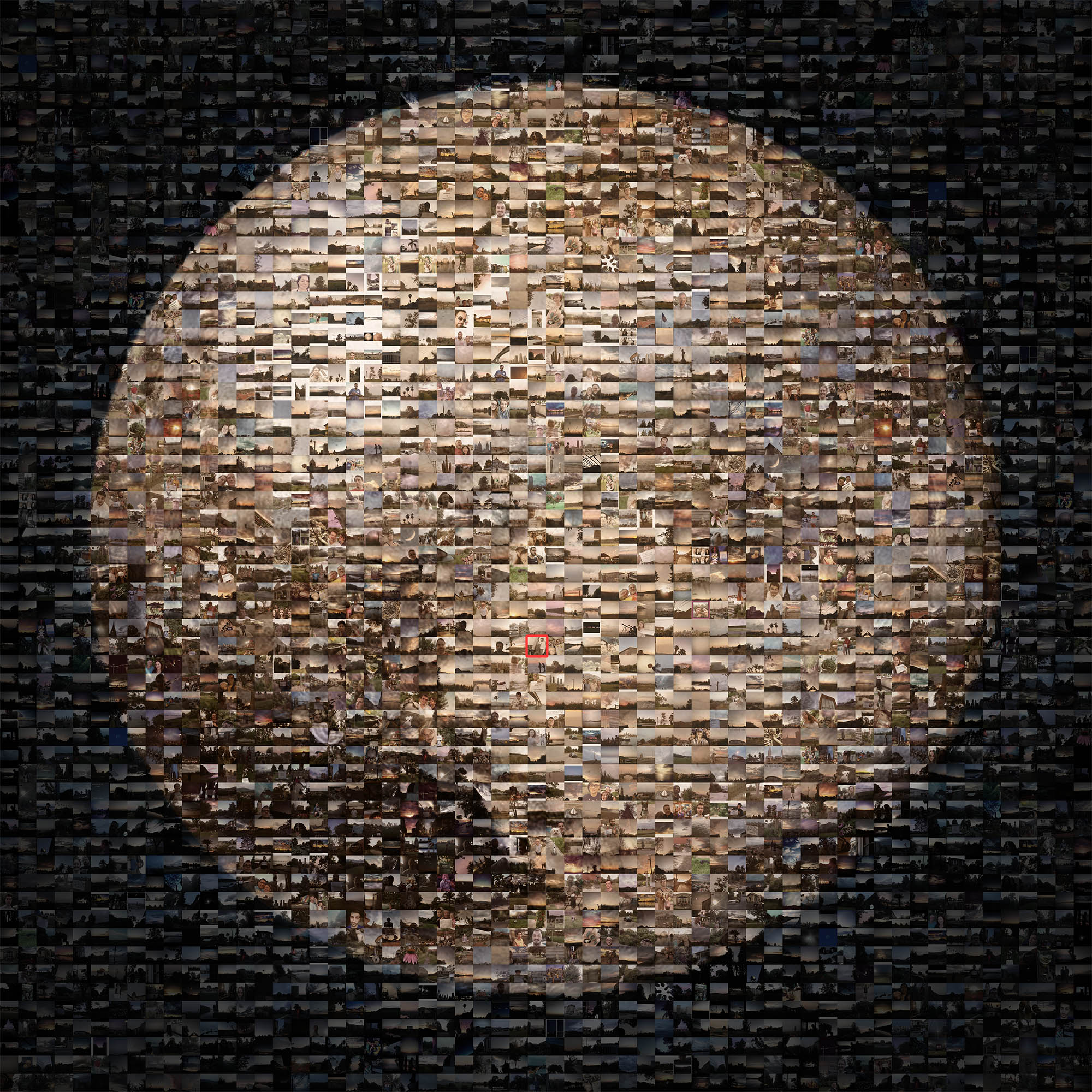
NASA created this mosaic of Pluto using photos submitted by users of social media with the hashtag #PlutoTime. Read the full story.
Water Ice on Pluto
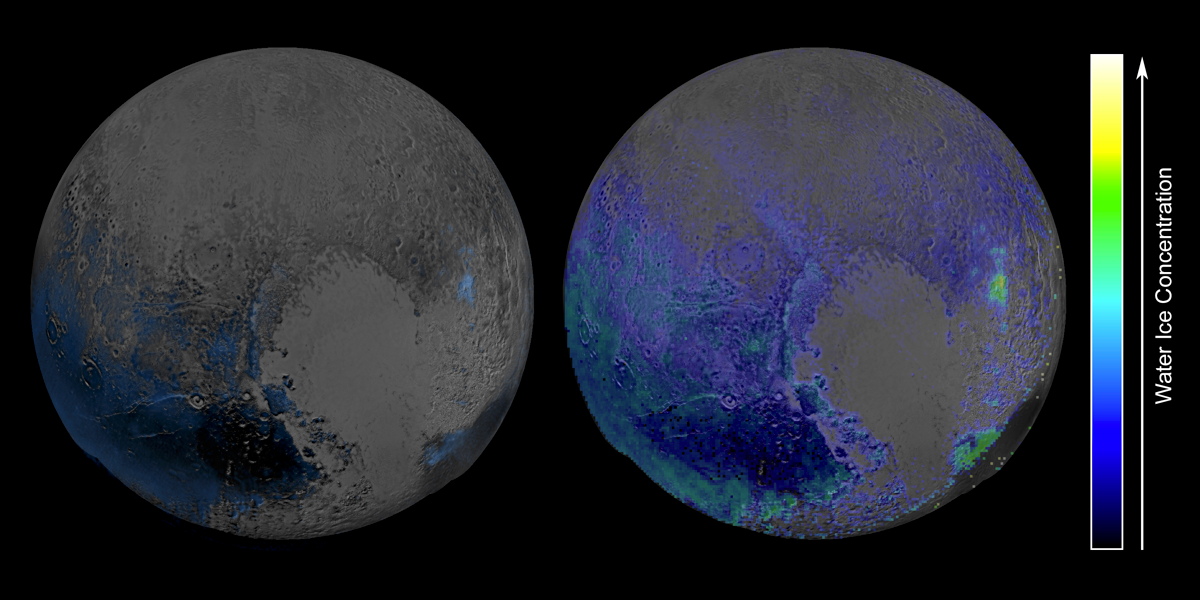
These maps of water ice on Pluto's surface were created using measurements made by NASA's New Horizons spacecraft during its July 2015 flyby of the dwarf planet. The map at left is an early effort; the one at right used modeling techniques to achieve greater sensitivity. Read the full story.
False-Color View of Pluto
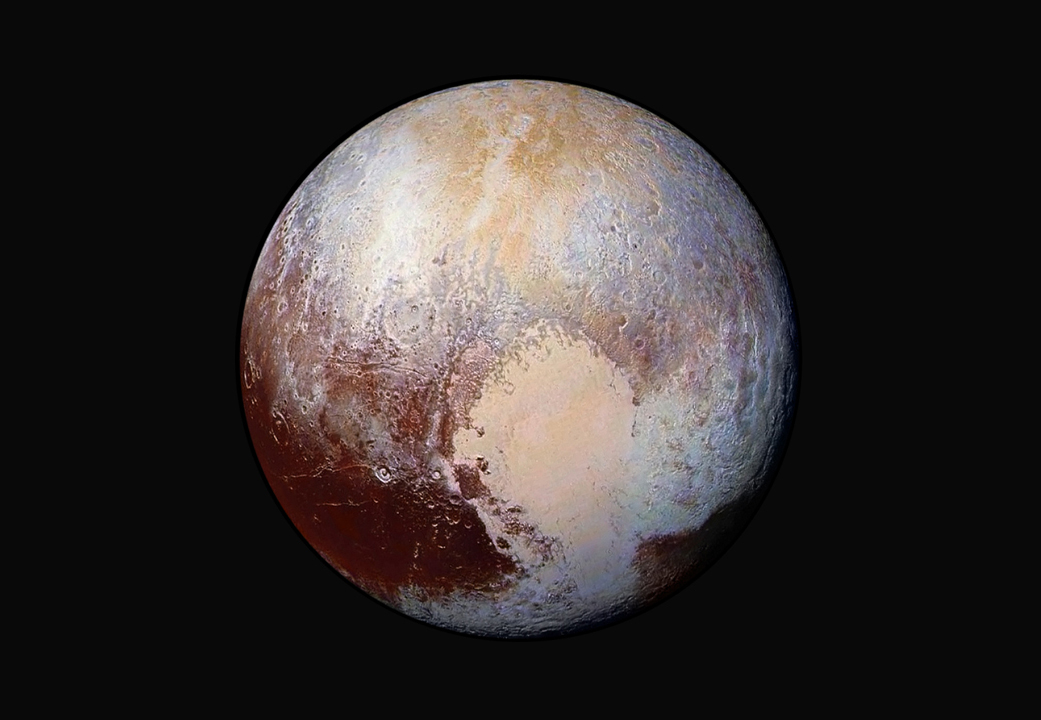
The "heart" on Pluto is and other surface details are clearly visible in this stunning false-color view of the dwarf planet captured by NASA's New Horizons spacecraft.
Geology of Sputnik Planitia
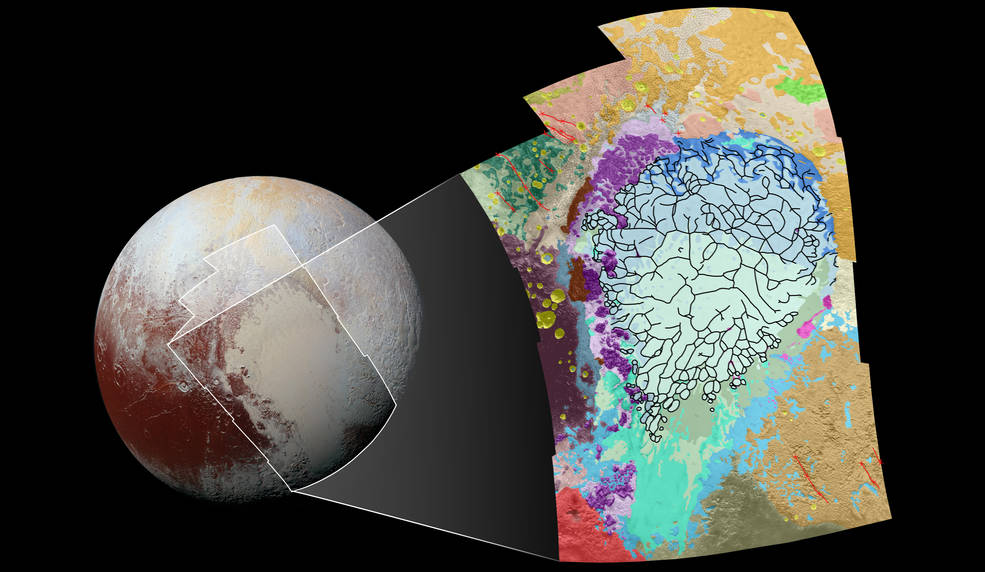
This map of the left side of Pluto’s heart-shaped feature uses colors to represent Pluto’s varied terrains, which helps scientists understand the complex geological processes at work.
Get the Space.com Newsletter
Breaking space news, the latest updates on rocket launches, skywatching events and more!
Mapping Pluto's 'Broken Heart’
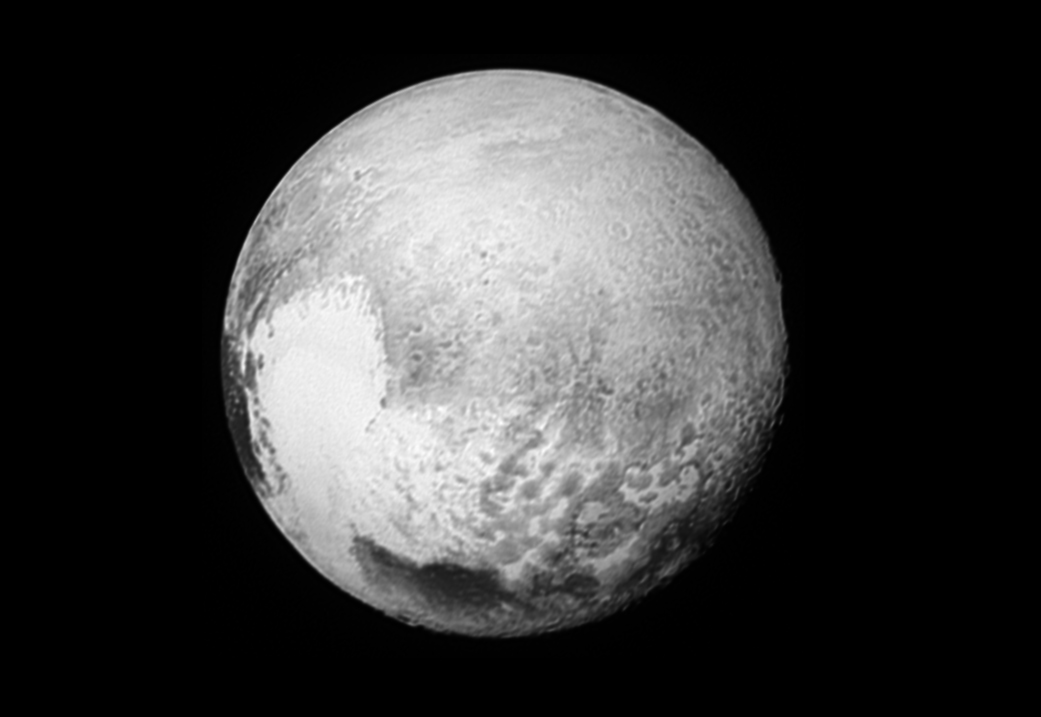
This image was taken by the New Horizons Long Range Reconnaissance Imager (LORRI) on the morning of July 13, 2015, from a range of 1.03 million miles (1.7 million kilometers).
Global Map of Pluto
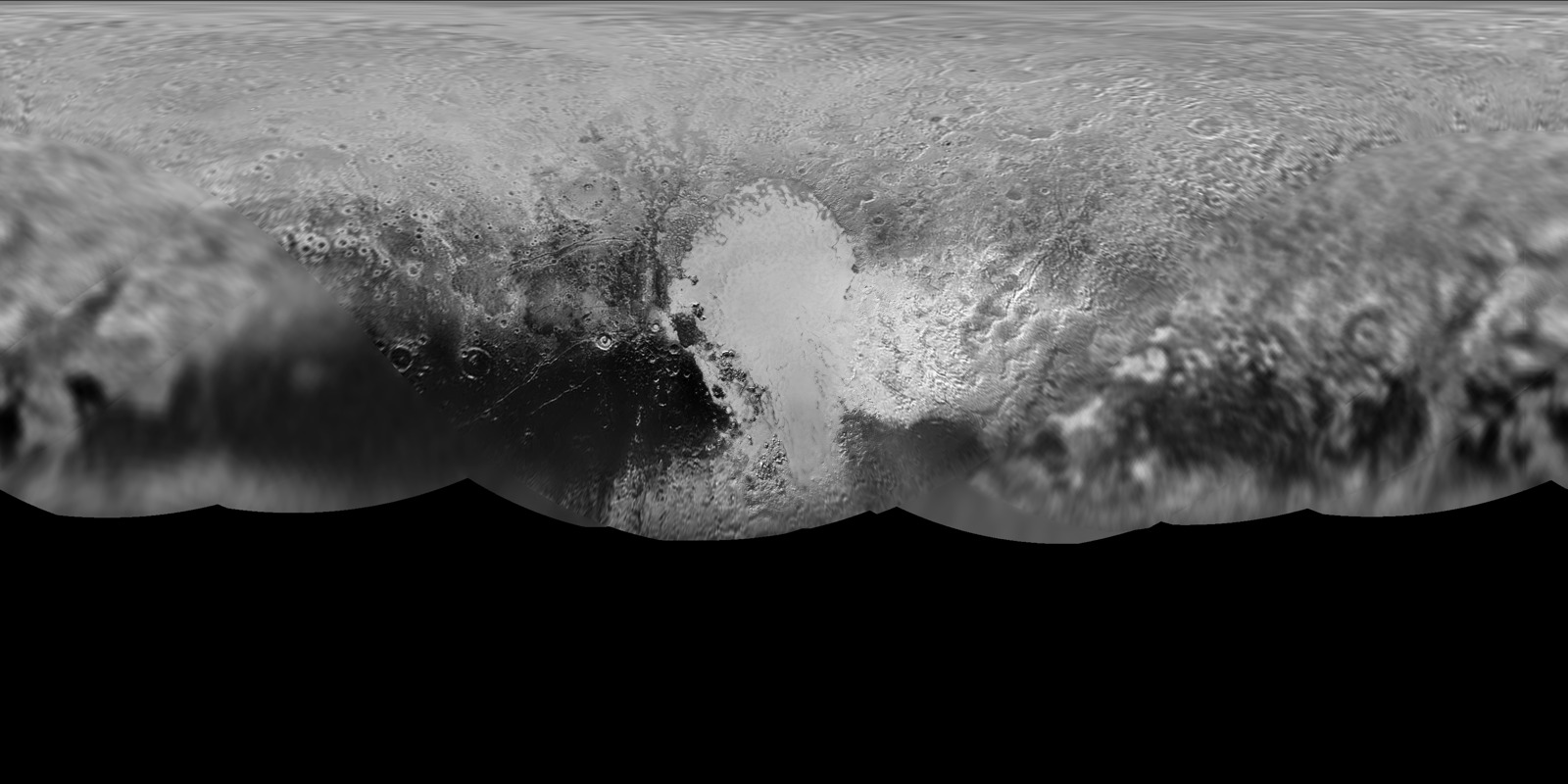
The science team of NASA’s New Horizons mission produced an updated global map of dwarf planet Pluto. Image released July 27, 2015.
Frozen Carbon Monoxide on Pluto
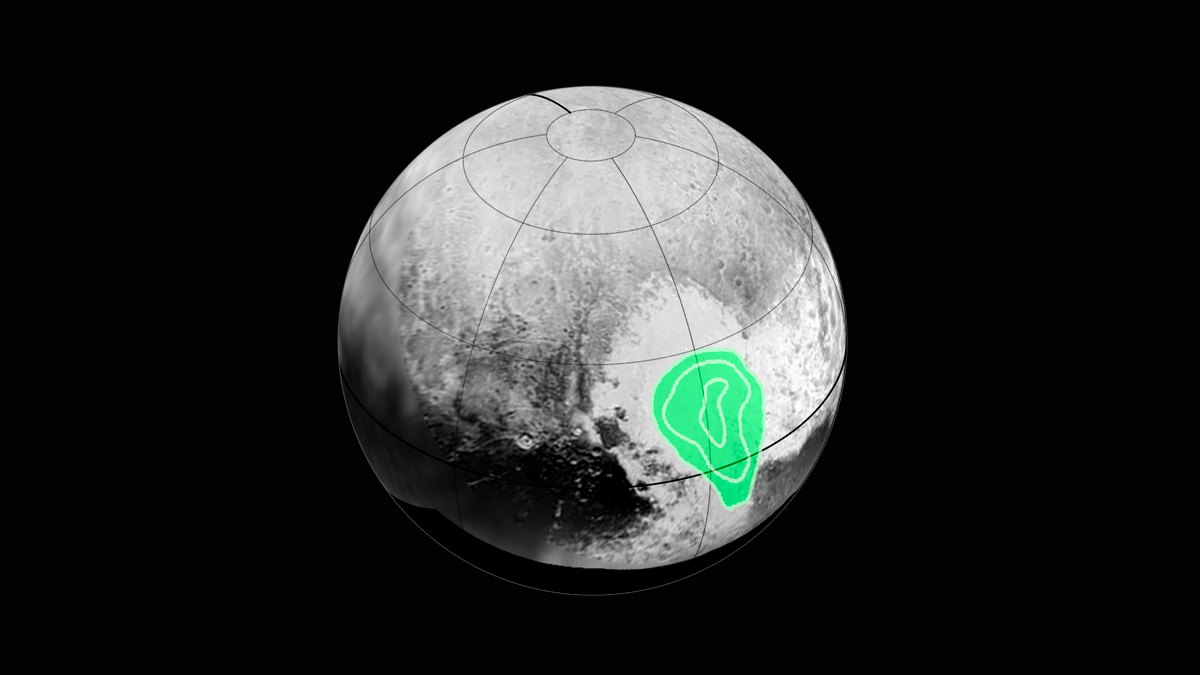
New Horizons’ Ralph instrument revealed evidence of carbon monoxide ice on Pluto, in the western part of the region known presently as Tombaugh Regio (Tombaugh Region), the highly visible "heart of Pluto." The contours overlain on the image show that the concentration of frozen carbon monoxide increases towards the center of the “bull’s eye.” The data was acquired by the spacecraft on July 14, 2015, and transmitted to Earth on July 16. [See our complete coverage.]
Pluto's floating hills
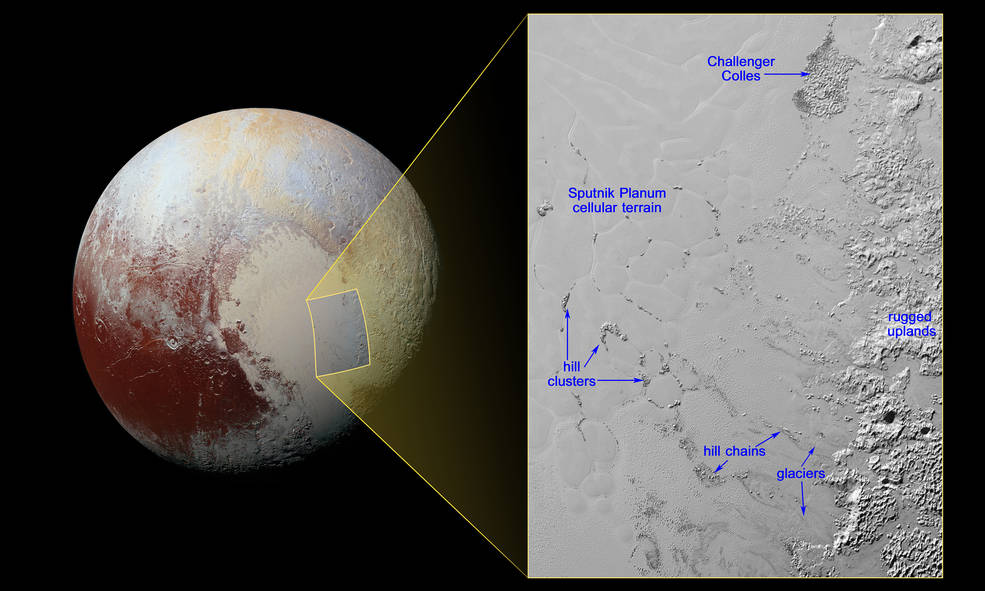
Hills of water ice on Pluto 'float' in a sea of frozen nitrogen and move over time like icebergs in Earth's Arctic Ocean — another example of Pluto's fascinating geological activity. Read the full story.
Join our Space Forums to keep talking space on the latest missions, night sky and more! And if you have a news tip, correction or comment, let us know at: community@space.com.

Hanneke Weitering is a multimedia journalist in the Pacific Northwest reporting on the future of aviation at FutureFlight.aero and Aviation International News and was previously the Editor for Spaceflight and Astronomy news here at Space.com. As an editor with over 10 years of experience in science journalism she has previously written for Scholastic Classroom Magazines, MedPage Today and The Joint Institute for Computational Sciences at Oak Ridge National Laboratory. After studying physics at the University of Tennessee in her hometown of Knoxville, she earned her graduate degree in Science, Health and Environmental Reporting (SHERP) from New York University. Hanneke joined the Space.com team in 2016 as a staff writer and producer, covering topics including spaceflight and astronomy. She currently lives in Seattle, home of the Space Needle, with her cat and two snakes. In her spare time, Hanneke enjoys exploring the Rocky Mountains, basking in nature and looking for dark skies to gaze at the cosmos.









